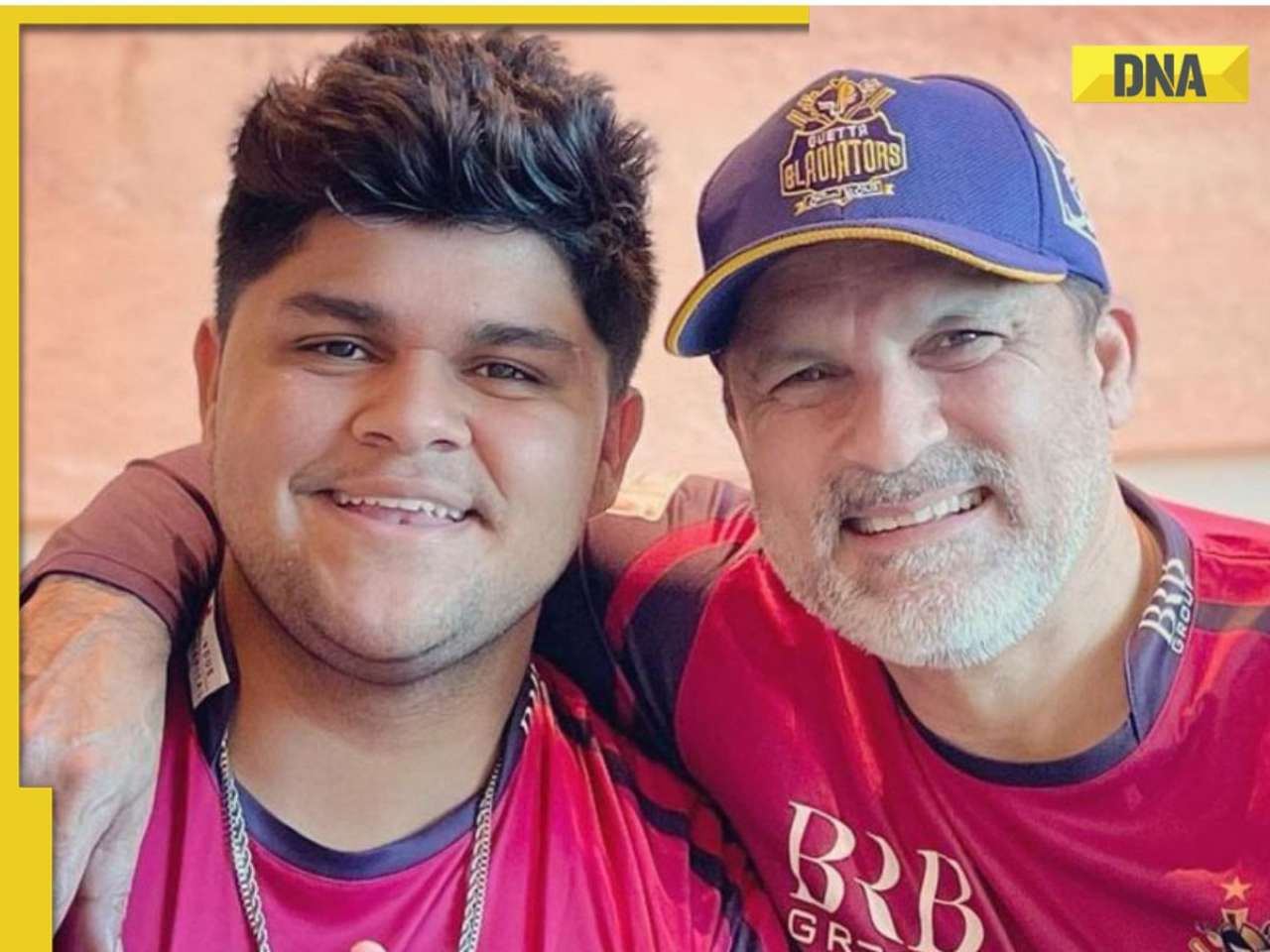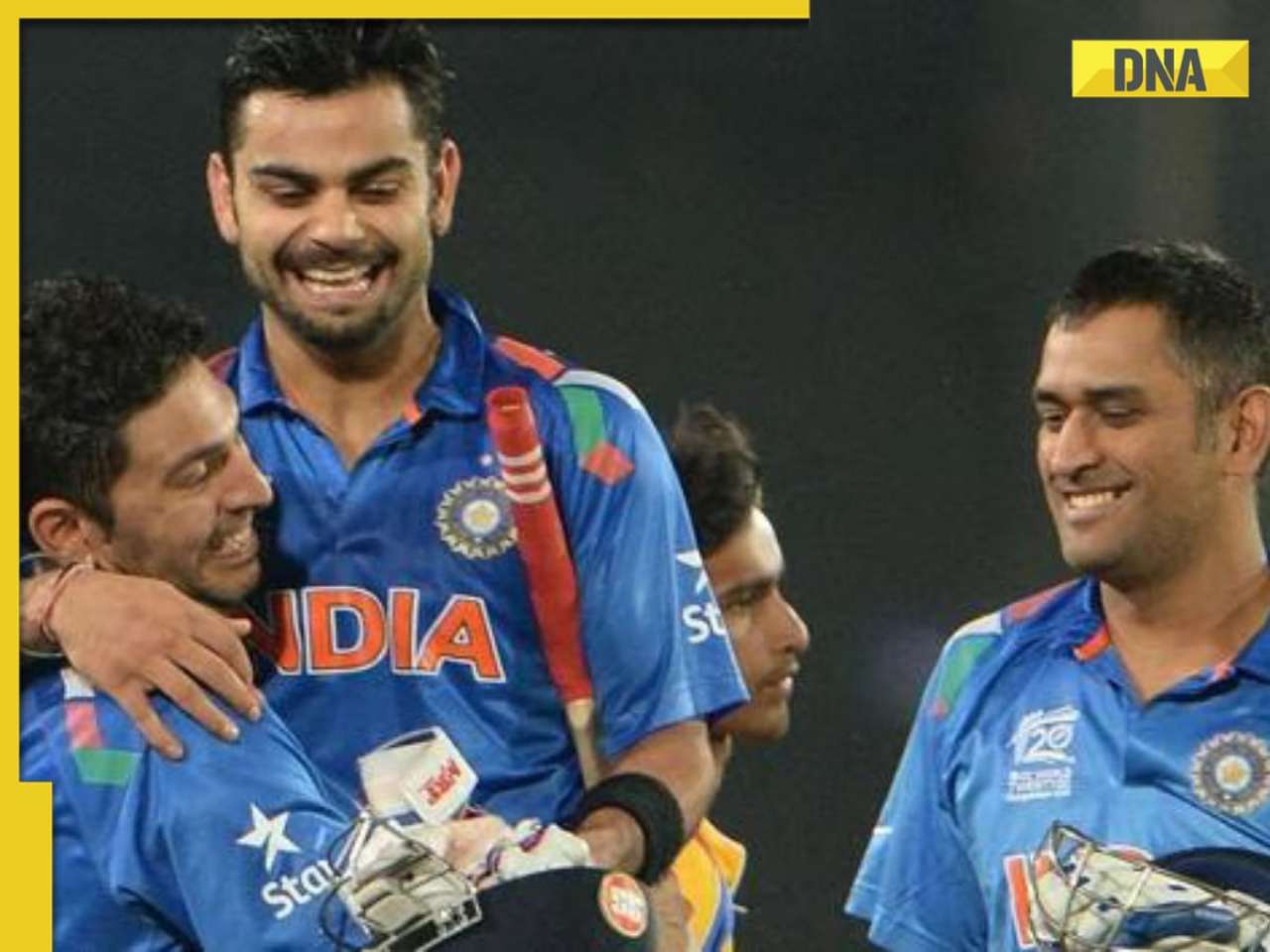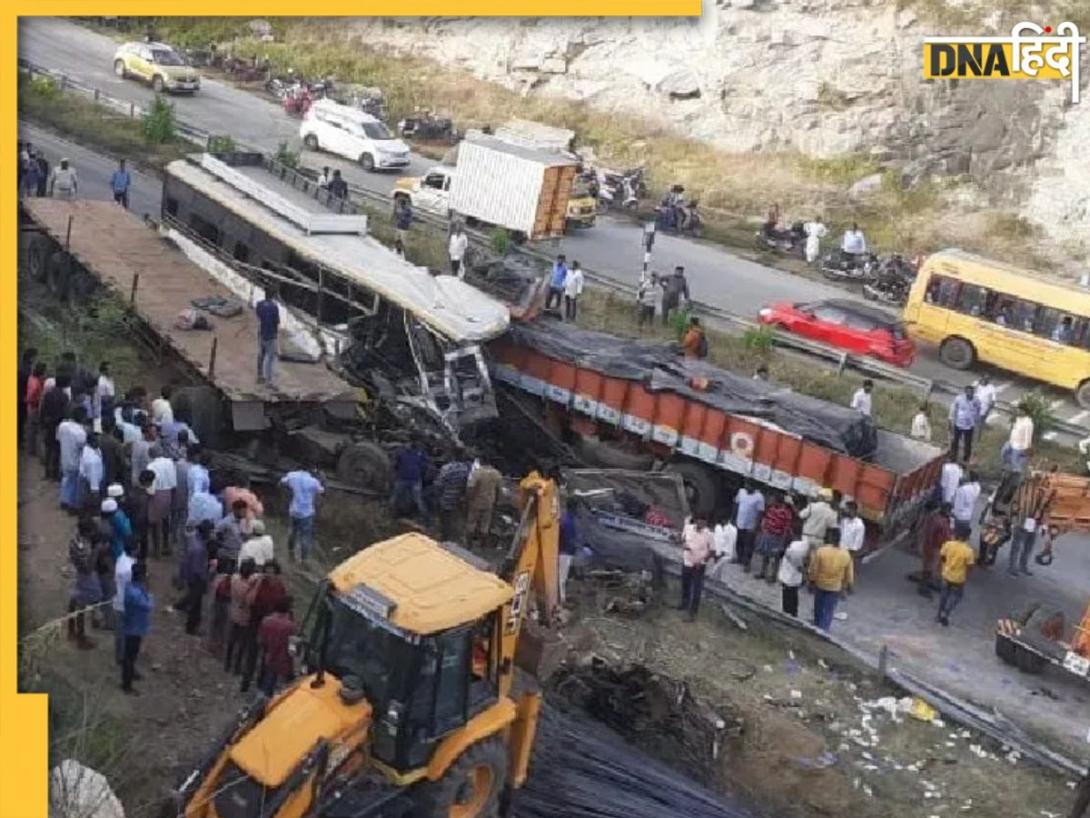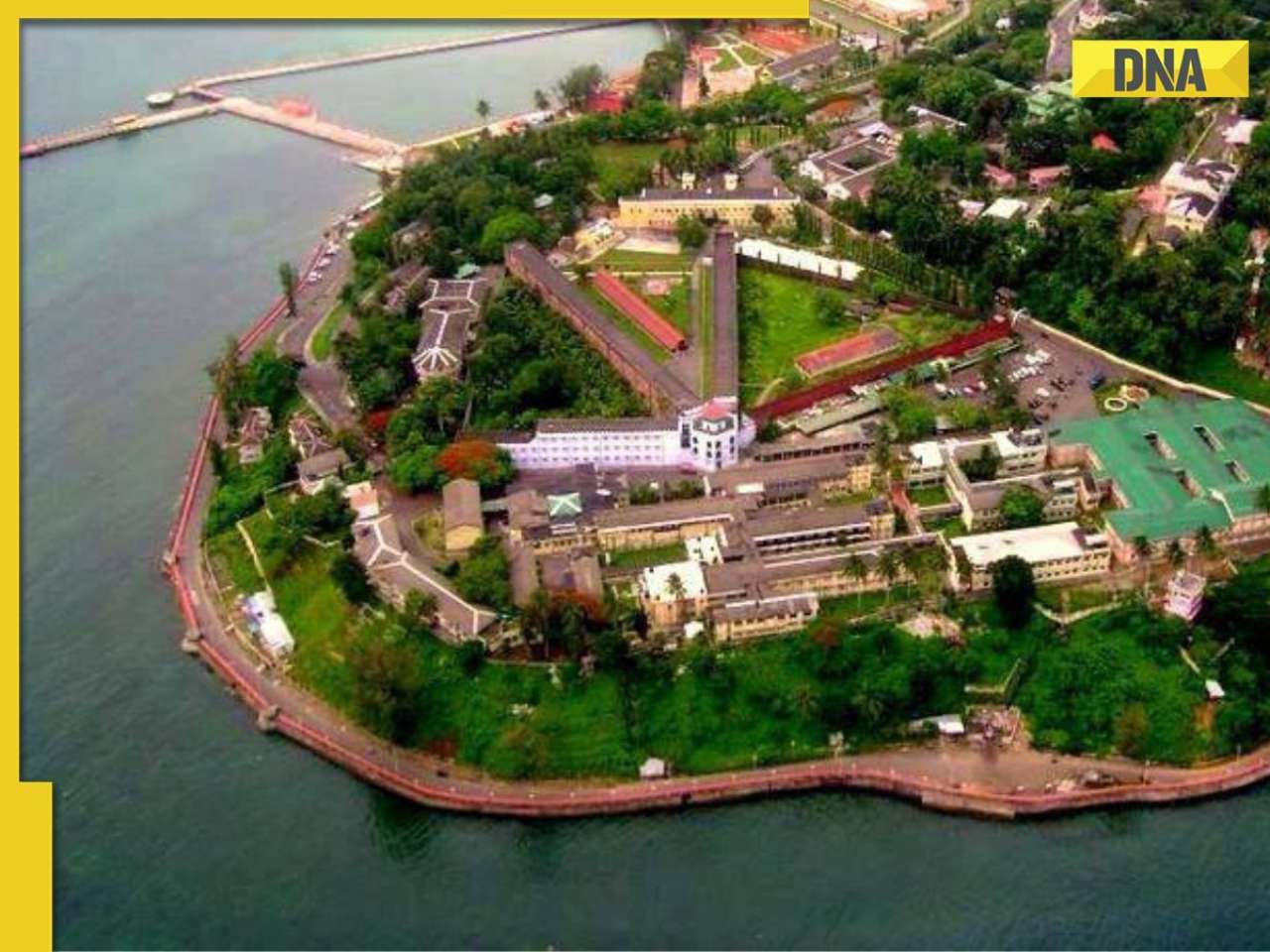Hezbollah reported that over 320 Katyusha rockets had been fired at Israeli positions so far.
Lebanon's Hezbollah announced that it launched a major attack using rockets and drones on Israeli positions early in the morning on Sunday (August 25) in response to the killing of a top commander. Israel, in turn, carried out what it described as pre-emptive strikes against the group.
Hezbollah reported that over 320 Katyusha rockets had been fired at Israeli positions so far. The group stated that 11 Israeli bases and barracks were targeted, including some in the Golan Heights, which Israel has annexed. The Iran-backed Hezbollah movement has been exchanging fire with Israel in support of Hamas since the Palestinian militant group’s attack on Israel on October 7, 2023, which led to the conflict in Gaza.
However, concerns about a larger conflict intensified after Iran and Hezbollah vowed to retaliate for the killing of Hamas leader Ismail Haniyeh in Tehran and an Israeli strike that killed senior Hezbollah commander Fuad Shukr in south Beirut last month. According to Hezbollah, their latest attack was only a first response to Shukr’s killing. The group claimed that the ‘first phase’ of their operation was “completely successful”, aiming to target Israeli barracks and positions to clear the way for attack drones to reach deeper targets within Israel.
The Israeli military reported that approximately 100 warplanes were used to carry out the airstrikes, targeting numerous rocket launch sites across southern Lebanon. By mid-morning, the exchange of fire seemed to have been halted. In Lebanon, at least three people lost their lives in the attacks. Israel reported that one of its service members, 21-year-old Petty Officer 1st Class David Moshe Ben Shitrit, was killed in northern Israel and two other soldiers sustained minor and moderate injuries.
Since October, Lebanon’s health ministry has reported that over 560 people have been killed, with most of them being Hezbollah fighters. In Israel, the authorities have confirmed the deaths of 26 civilians and 23 soldiers. The UN also states that nearly 200,000 people have been displaced on both sides of the border.
Katyusha Rockets: From WWII Origins
During World War II, Soviet soldiers called the 82mm and 132mm rockets used by their forces ‘Katyusha’, which means ‘Little Katy’ in Russian. The 82mm rockets had a diameter of 82 millimetres, while the 132mm rockets had a diameter of 132 millimetres.
Hezbollah uses various types of Katyusha rockets, each with different features. These rockets come in different ranges, typically spanning from 4-40 kilometres. They also differ in terms of warhead, which can range from 10-20 kilograms and include either high explosive materials or sub-munitions, which are smaller explosive devices contained within a larger warhead. These smaller explosives are designed to be dispersed over a wider area upon detonation, increasing the potential damage and coverage of the rocket. The rockets have varied launch weights, usually ranging from 45-75 kilograms.
Deadly Katyusha 122mm 9M22 Variant
Today, one of the well-known versions of Katyusha rockets is the 122mm 9M22 Grad-type. This variant is widely used and recognized by military experts. To put it simply, ‘122mm’ refers to the diameter of the rocket, with a measurement of 122 millimetres. On the other hand, ‘9M22 Grad’ is the specific designation given to this model of Katyusha rocket. It is important to note that ‘Grad’ means ‘hail’ (hailstones or ice pellets) in Russian, which may reflect the rocket’s ability to shower the target area with projectiles upon launch.
The 9M22 Grad-type variant of Katyusha rockets was initially designed to be used with the Soviet BM-21 multiple rocket launcher. These rockets have an effective range of around 20 kilometres and are capable of carrying either 6 kilograms of high explosive material or sub-munitions. These Katyusha rockets can be launched from a specific launcher and can travel up to 20 kilometres, delivering either a powerful explosive payload, or dispersing smaller explosives to cause harm to individuals.
The Katyusha rocket can be launched using either simple tripod launchers, or from truck-based multiple rocket launchers (MRLs). The rocket can be fired using different launchers and although it may not be extremely precise, it can still hit its target within a specific zone measuring around 336 metres by 160 metres.
Katyusha rockets were the main weapons used by Hezbollah in the 2006 Lebanon war. Iran is Hezbollah’s main supplier of Katyusha rockets. Since 2001, they have also provided truck-mounted rocket launchers to the group. These weapons allow Hezbollah to launch Katyushas at Israel, either one at a time, or in quick succession for more media attention.
Before Israel’s Iron Dome system was deployed in 2011, intercepting Katyusha rockets was challenging. Their short flight time and low trajectory made it hard and costly for advanced missile defences, such as the Patriot system, to stop them.
(The author of this article is a Defence, Aerospace & Political Analyst based in Bengaluru. He is also Director of ADD Engineering Components, India, Pvt. Ltd, a subsidiary of ADD Engineering GmbH, Germany. You can reach him at: girishlinganna@gmail.com)
Disclaimer: The views expressed in this article are of the author only.
Find your daily dose of news & explainers in your WhatsApp. Stay updated, Stay informed- Follow DNA on WhatsApp.
![submenu-img]() Pusha T, DIVINE to headline second edition of Gully Fest; details inside
Pusha T, DIVINE to headline second edition of Gully Fest; details inside![submenu-img]() This small country has earned more wealth than US, UK, India, China, since 2010, name will leave you surprised
This small country has earned more wealth than US, UK, India, China, since 2010, name will leave you surprised![submenu-img]() Moin Khan slams Pakistan legend for demoralising son Azam Khan for this reason
Moin Khan slams Pakistan legend for demoralising son Azam Khan for this reason![submenu-img]() Yuvraj Singh picks this India star 'to bat for his life'; it's not Virat Kohli, MS Dhoni
Yuvraj Singh picks this India star 'to bat for his life'; it's not Virat Kohli, MS Dhoni![submenu-img]() CBSE issues show-cause notices to 27 schools in Rajasthan and Delhi for...
CBSE issues show-cause notices to 27 schools in Rajasthan and Delhi for...![submenu-img]() Yogi Adityanath पार लगाएंगे उपचुनाव में UP BJP की नैय्या, इस विभाग में 11,000 पदों पर तत्काल भर्ती का पिटारा
Yogi Adityanath पार लगाएंगे उपचुनाव में UP BJP की नैय्या, इस विभाग में 11,000 पदों पर तत्काल भर्ती का पिटारा![submenu-img]() Haryana Assembly Elections 2024: हरियाणा में मतदान से पहले बाहर निकले Arvind Kejriwal, 5 पॉइंट में पढ़ें AAP के लिए कितना बदलेगा चुनाव?
Haryana Assembly Elections 2024: हरियाणा में मतदान से पहले बाहर निकले Arvind Kejriwal, 5 पॉइंट में पढ़ें AAP के लिए कितना बदलेगा चुनाव?![submenu-img]() Andhra Pradesh Accident: चित्तूर में बस और ट्रक की टक्कर में 7 लोगों की मौत, CM नायडू ने किया मुआवजे का ऐलान
Andhra Pradesh Accident: चित्तूर में बस और ट्रक की टक्कर में 7 लोगों की मौत, CM नायडू ने किया मुआवजे का ऐलान![submenu-img]() मां ने तिलक लगाया, पिता ने गले... जेल से घर पहुंचते ही ऐसे हुआ CM केजरीवाल का स्वागत
मां ने तिलक लगाया, पिता ने गले... जेल से घर पहुंचते ही ऐसे हुआ CM केजरीवाल का स्वागत![submenu-img]() Sonam Kapoor के ससुर ने लंदन में खरीदा आलीशान आशियाना, Shah Rukh के मन्नत से ज्यादा है कीमत
Sonam Kapoor के ससुर ने लंदन में खरीदा आलीशान आशियाना, Shah Rukh के मन्नत से ज्यादा है कीमत![submenu-img]() Ford to return to India after 2 years with reopening of....
Ford to return to India after 2 years with reopening of....![submenu-img]() Maruti Suzuki launches new Swift CNG, check price, mileage, other features
Maruti Suzuki launches new Swift CNG, check price, mileage, other features![submenu-img]() ‘30 LPA, 3BHK, no in-laws’: Woman earning Rs 1.32 lakh salary lists demands for future husband, netizens say...
‘30 LPA, 3BHK, no in-laws’: Woman earning Rs 1.32 lakh salary lists demands for future husband, netizens say...![submenu-img]() In a big EV push, Centre launches Rs 10900 crore PM E-Drive scheme to replace…
In a big EV push, Centre launches Rs 10900 crore PM E-Drive scheme to replace…![submenu-img]() World’s longest car has helipad, swimming pool, mini-golf course, can seat over…; it cost…
World’s longest car has helipad, swimming pool, mini-golf course, can seat over…; it cost…![submenu-img]() CBSE issues show-cause notices to 27 schools in Rajasthan and Delhi for...
CBSE issues show-cause notices to 27 schools in Rajasthan and Delhi for...![submenu-img]() Meet IAS officer, who topped in 10th, 12th, CLAT, received gold medals by CJI, cracked UPSC exam with AIR...
Meet IAS officer, who topped in 10th, 12th, CLAT, received gold medals by CJI, cracked UPSC exam with AIR...![submenu-img]() Meet woman who cleared UPSC exam at 23 with AIR 94, but didn't become IAS officer due to...
Meet woman who cleared UPSC exam at 23 with AIR 94, but didn't become IAS officer due to...![submenu-img]() Meet man, son of juice seller, grew up with limited resources, led carefree life, then cracked NEET in 3rd attempt...
Meet man, son of juice seller, grew up with limited resources, led carefree life, then cracked NEET in 3rd attempt...![submenu-img]() CAT 2024 registrations to end today: Check eligibility, steps to apply and more
CAT 2024 registrations to end today: Check eligibility, steps to apply and more![submenu-img]() Jaishankar: EAM Dr. S. Jaishankar On India-China Relations & Disengagement Problems | Ladakh
Jaishankar: EAM Dr. S. Jaishankar On India-China Relations & Disengagement Problems | Ladakh![submenu-img]() Trump vs Harris: Donald Trump Says He Will Not Debate Kamala Harris Again | US Presidential Debate
Trump vs Harris: Donald Trump Says He Will Not Debate Kamala Harris Again | US Presidential Debate![submenu-img]() Delhi Gym News: Afghan-Origin Gym Owner Shot Dead In Delhi | Caught On CCTV
Delhi Gym News: Afghan-Origin Gym Owner Shot Dead In Delhi | Caught On CCTV![submenu-img]() Malaika Arora Father Death: Anil Mehta's Final Words To His Daughter Malaika Arora
Malaika Arora Father Death: Anil Mehta's Final Words To His Daughter Malaika Arora![submenu-img]() Chandigarh Blast: Grenade Explosion In Sector 10; Auto Driver Arrested, Investigation Ongoing
Chandigarh Blast: Grenade Explosion In Sector 10; Auto Driver Arrested, Investigation Ongoing![submenu-img]() How Harshita Transformed SMS Collections at a Leading Financial Institution
How Harshita Transformed SMS Collections at a Leading Financial Institution![submenu-img]() Engineering Excellence: An In-Depth Conversation with Swetha Singiri
Engineering Excellence: An In-Depth Conversation with Swetha Singiri![submenu-img]() Meet man, who became crorepati in his 20s, bought luxurious cars, then lost it all due to…
Meet man, who became crorepati in his 20s, bought luxurious cars, then lost it all due to…![submenu-img]() Rajkumar: Revolutionizing the IT Landscape through Innovation and Impact
Rajkumar: Revolutionizing the IT Landscape through Innovation and Impact![submenu-img]() SEBI chief, her husband term all allegations against them as 'false, incorrect, malicious and motivated'
SEBI chief, her husband term all allegations against them as 'false, incorrect, malicious and motivated'![submenu-img]() Deepika Padukone, Ranveer Singh pose with their newborn baby girl in photoshoot? Here's the truth behind viral pictures
Deepika Padukone, Ranveer Singh pose with their newborn baby girl in photoshoot? Here's the truth behind viral pictures![submenu-img]() 7 most common things people have left behind in hotel rooms
7 most common things people have left behind in hotel rooms![submenu-img]() Mukesh Ambani's daughter-in-law Radhika Merchant wore her sister Anjali's necklace for the wedding, here's why
Mukesh Ambani's daughter-in-law Radhika Merchant wore her sister Anjali's necklace for the wedding, here's why![submenu-img]() Bollywood's biggest villain was a clerk; rejected for being 'too scary', later became richer than heroes, net worth is..
Bollywood's biggest villain was a clerk; rejected for being 'too scary', later became richer than heroes, net worth is..![submenu-img]() Meet Akshay Kumar's 'sister', 90s pop star who gave blockbusters at 16; left films forever at career’s peak, is now...
Meet Akshay Kumar's 'sister', 90s pop star who gave blockbusters at 16; left films forever at career’s peak, is now...![submenu-img]() Maharashtra leads FDI with Rs 70,995 crore in Q1FY25
Maharashtra leads FDI with Rs 70,995 crore in Q1FY25![submenu-img]() Travel Insurance 2024: Stress-free US trip for Indian travelers
Travel Insurance 2024: Stress-free US trip for Indian travelers![submenu-img]() Delhi CM Arvind Kejriwal walks out of Tihar Jail after 6 months as SC grants bail in excise policy case
Delhi CM Arvind Kejriwal walks out of Tihar Jail after 6 months as SC grants bail in excise policy case![submenu-img]() Port Blair, capital of Andaman and Nicobar Island get a new name, know what it is
Port Blair, capital of Andaman and Nicobar Island get a new name, know what it is![submenu-img]() Petronas takes lead in supercharging India’s energy transition
Petronas takes lead in supercharging India’s energy transition













































)
)
)
)
)
)
)
)
)
)
)
)
)
)
)





)
)
)
)
)
)